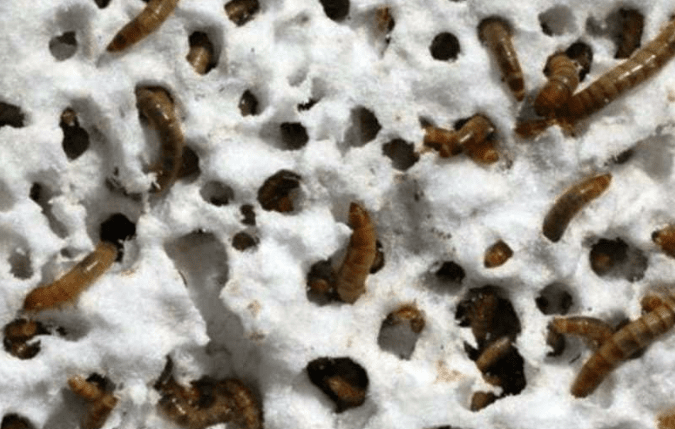The worms can reach between 5 to 6 cm in their maximum size and are native to Central America and the northern part of South America.
Researchers at the University of Queensland (UQ), in Australia, have discovered a species of worm capable of eating plastic that could be key to advancing in the recycling of plastic waste.
The Zophobas worm, the researchers explain, is capable of feeding on Polystyrene. It is a larva that is usually used to feed pets, however, it was recently discovered that it has a bacterial enzyme in its intestine that allows it to digest and feed on Styrofoam.
Dr. Chris Rinke and his team from UQ’s School of Chemistry and Molecular Biosciences bred a group of “superworms” for three weeks on three different diets. The first received a menu based on bran, while the second received Polystyrene.
“We found that ‘super worms’ fed a Styrofoam-only diet not only survived, but even marginally gained weight. This suggests that they can get energy from Styrofoam,” Rinke said.
The worms can reach between 5 to 6 cm in their maximum size and are native to Central America and the northern part of South America. In the research published in the scientific journal Microbial Genomies, Rinke, the scientist in charge of the research, described the larvae as recycling “mini-plants” that shred this plastic material with their mouths and then feed the bacteria in their intestine.
The researchers now believe that the characteristics of the stomach of these larvae could be the key to driving large-scale solutions to the problem of poor plastic waste management.
Although during the investigation it was found that the “super worms” fed with plastic survived, gained volume and managed to complete their transformation into beetles, the objective now will be to take advantage of the enzymes within these larvae, since a diet exclusively of Styrofoam caused a loss in the microbial diversity of their intestines.
In this way, the team of researchers details that the objective now will be to understand and imitate the process that allows the “super worms” to crush and digest Polystyrene and then transfer this procedure to large recycling plants.

